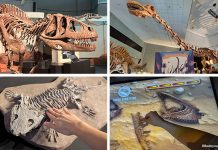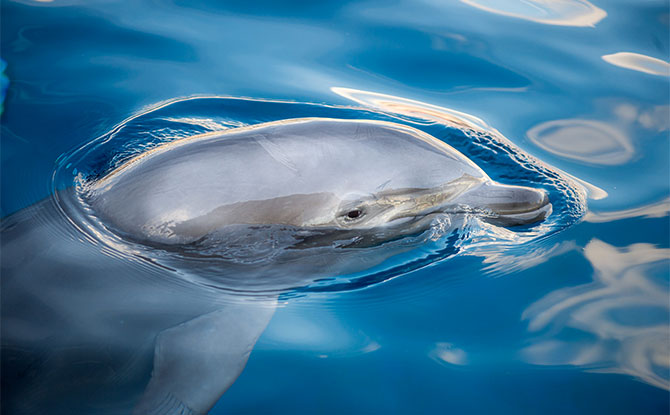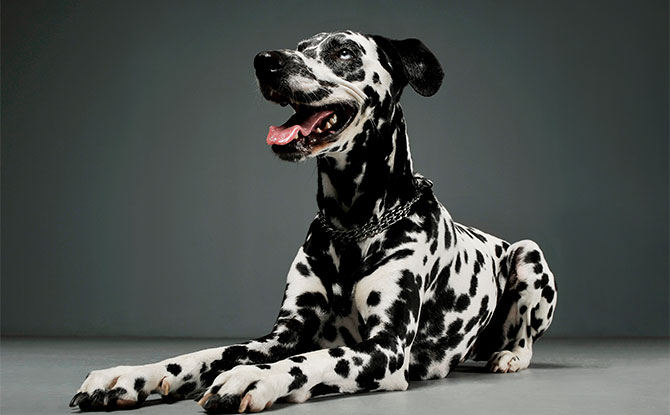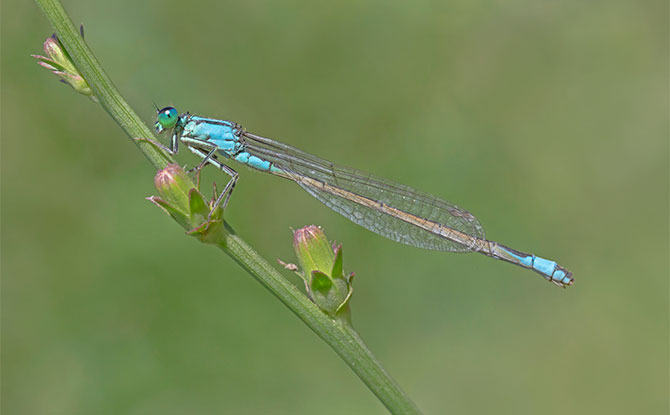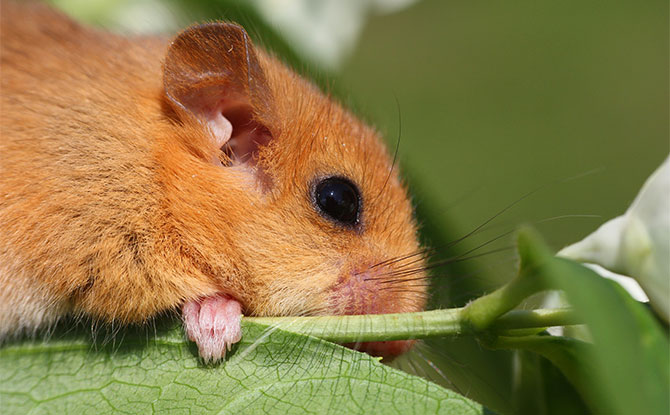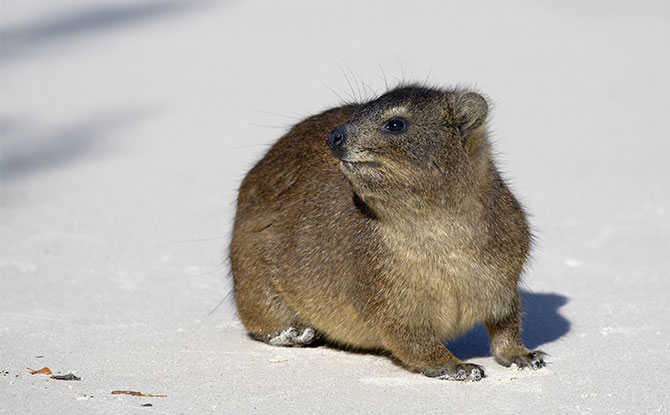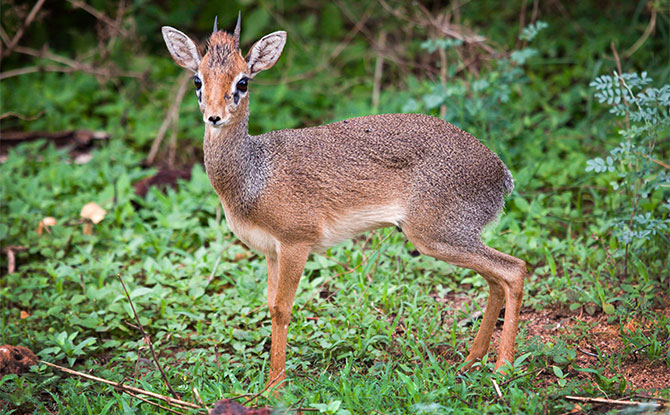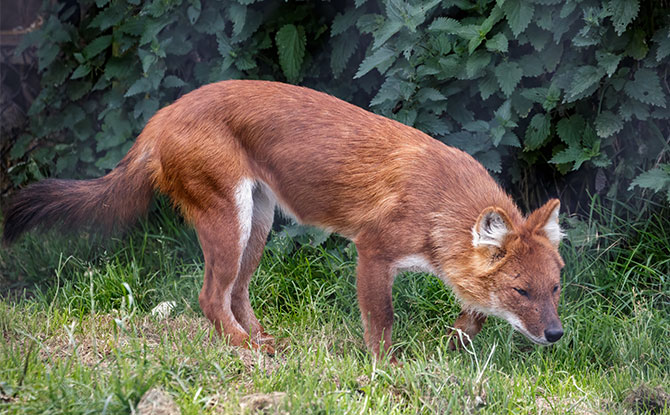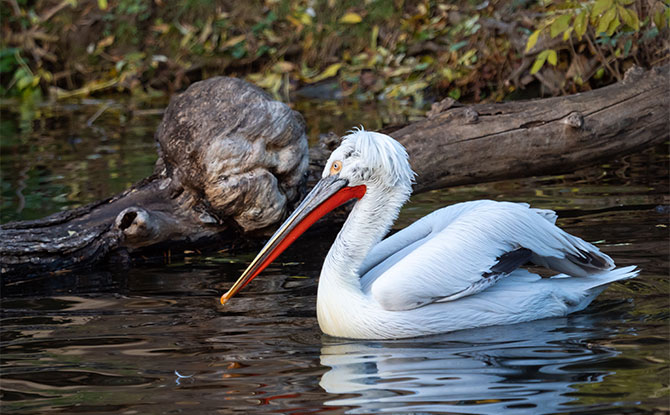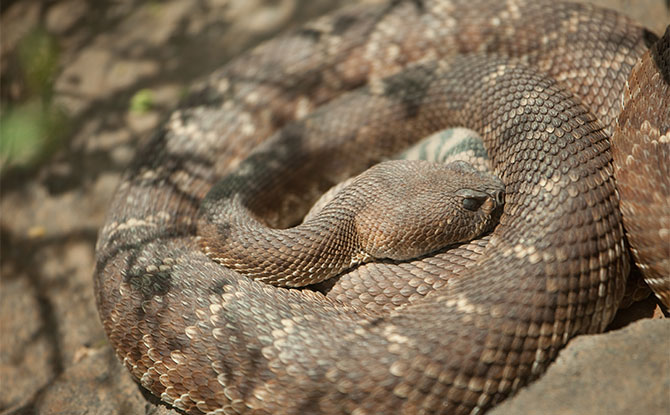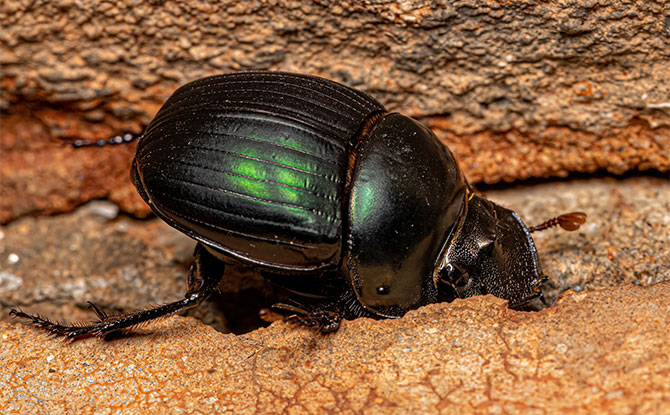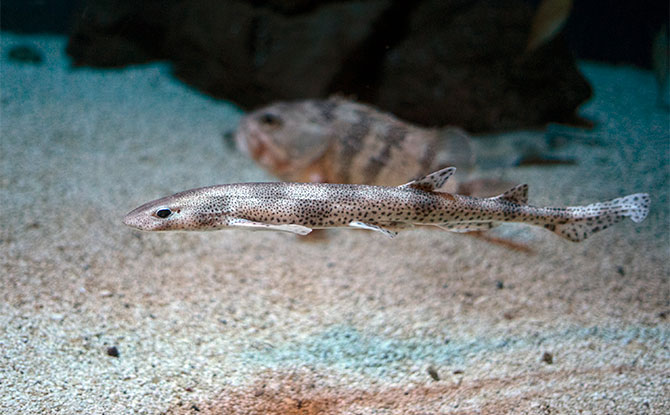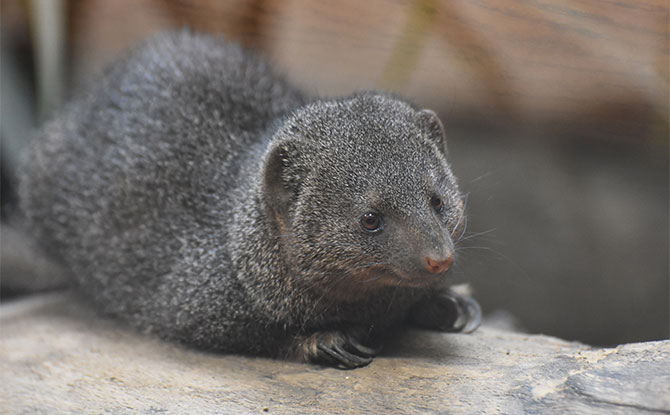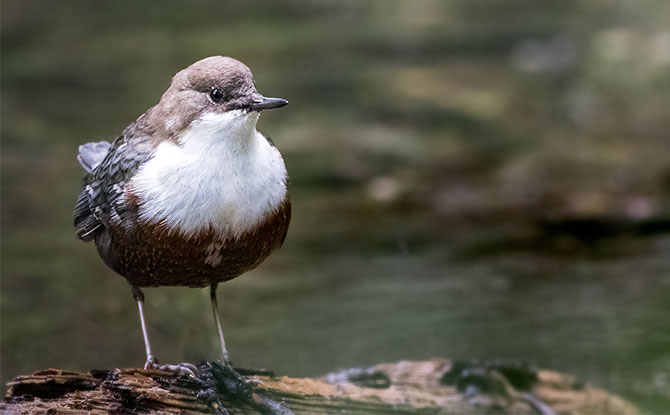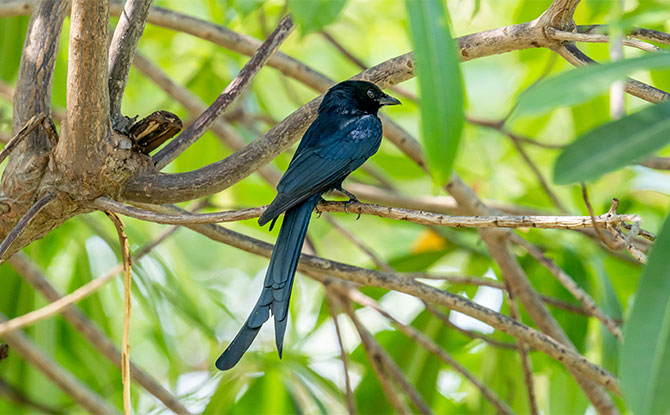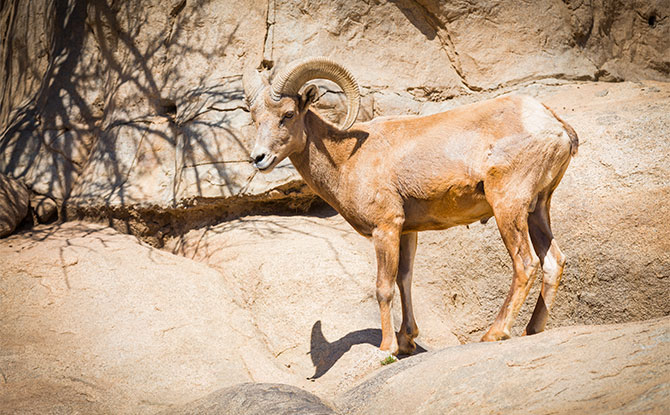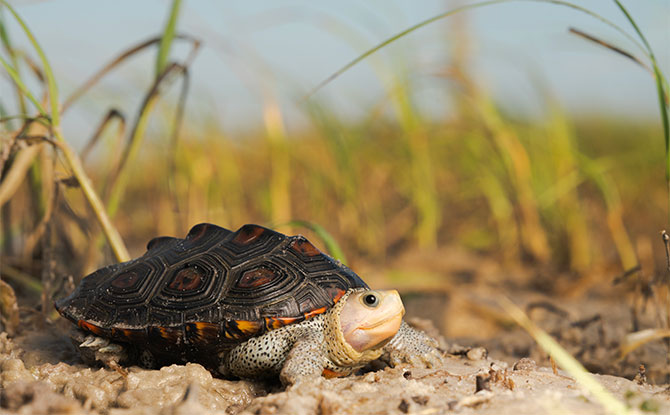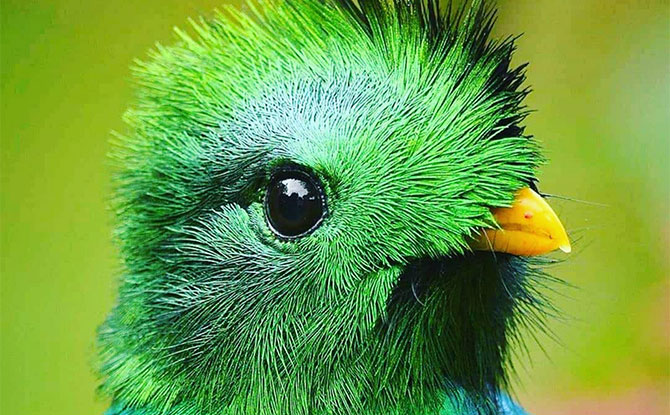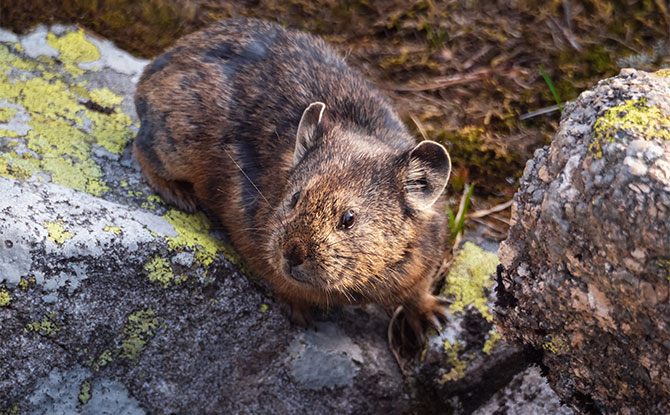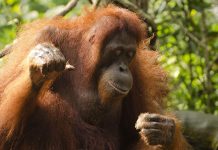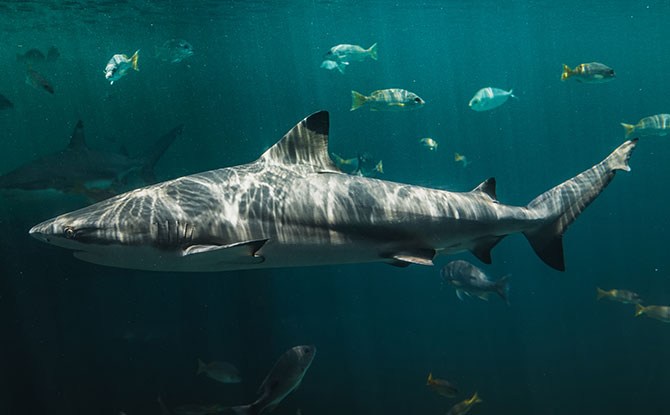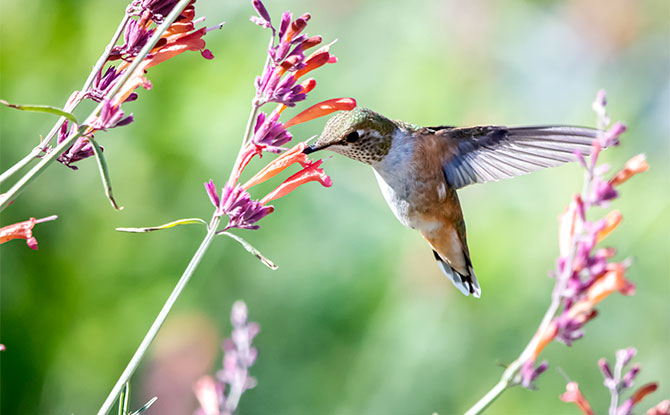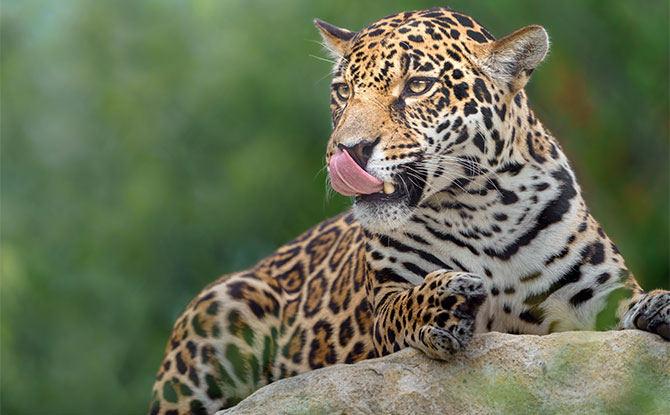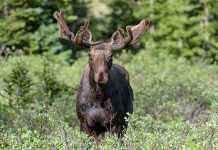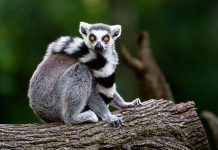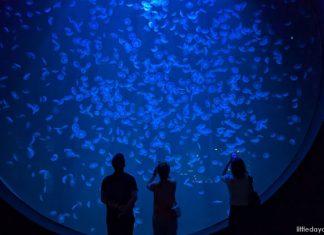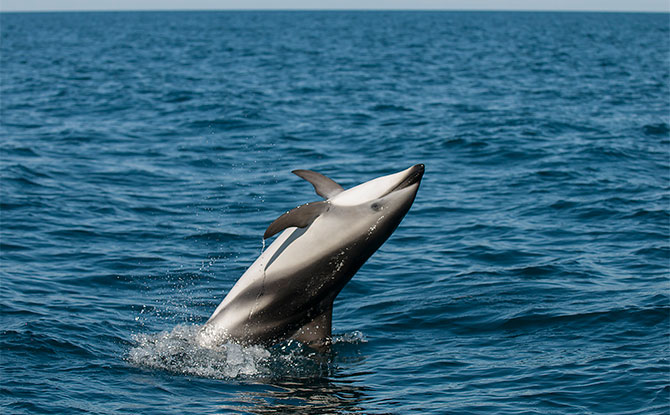
Ever wondered what are animals starting with D. On this list, we have included both majestic creatures and tiny critters. The animal kingdom is full of surprises and amazing facts.
Get ready to explore a wide range of animals that begin with D. We will talk about dogs, marine mammals, birds, and reptiles. It’s time to meet some of the most interesting creatures on our planet.
But that’s not all! We’ll share fun facts about each animal. And we’ll look into their characteristics, habits, and where they live. You’ll learn a lot and have fun with our guide.
31 Animals that Start with D
If you love nature, animals, or just want to learn, this list is for you. Join us as we discover the wonders of animals with names that start with D. It’s going to be an exciting adventure!
DINO-TASTIC EXHIBITION: Meet a 40m Long Dino Face-to-Face
GIVEAWAY FOR ENEWSLETTER SUBSCRIBERS: LEGO NINJAGO SET
REGISTER EARLY AND SAVE UP TO $400: English Classes for N1 to Secondary
- Dog
- Dolphin
- Deer
- Duck
- Dove
- Dalmatian
- Dingo
- Donkey
- Dragonfly
- Damselfly
- Dugong
- Dormouse
- Dassie
- Desert Tortoise
- Desert Iguana
- Dik-dik
- Dhole
- Dalmatian Pelican
- Damselfish
- Diamondback Rattlesnake
- Dung Beetle
- Duiker
- Dogfish
- Desert Kangaroo Rat
- Dugite
- Dipper
- Drongo
- Desert Monitor Lizard
- Desert Bighorn Sheep
- Diamondback Terrapin
- Dusky Dolphin
Prepare to be amazed by animals like the dog, dolphin, deer, duck, and dove. Each one has a special story to tell. We’re excited to share these stories with you. Let’s start our exploration of the amazing animal world starting with D!
Dog
Dogs are incredibly popular pets all over the world. They are loyal friends and beloved members of many families. With various breeds, dogs offer something special for everyone.
Each dog breed has its unique features. From the tiny Chihuahuas to the giant Great Danes, there’s a breed for every preference. Breeds like Border Collies and Poodles are smart, while German Shepherds and Labradors are loyal.
Dogs are great at learning and can be trained for work. Jobs include search and rescue, therapy, and police work. They’re also social and loving, making them perfect family pets.
Owning a dog means taking good care of them. They need exercise, healthy food, and vet visits. It’s also important to keep them mentally and socially active. This prevents boredom and helps them grow well.
Here’s a cool fact: Dogs have an amazing sense of smell. They can be trained to sniff out drugs, explosives, and even cancer. Their sense of smell is better than any other domestic animal.
Dolphin
Dolphins are smart creatures that love to play and hang out together. They are part of the Delphinidae family and live all over the world. These animals are fast and agile, thanks to their streamlined bodies.
There are many types of dolphins. Each kind has its own look and where it lives. For example, there are bottlenose dolphins, common dolphins and spinner dolphins.
Dolphins are very bright. They use sounds, clicks, and movements to talk to each other. These animals form close-knit groups known as pods.
They eat fish and squid mostly. But some types like crustaceans and other sea life. Dolphins are clever hunters. They can herd fish together or stun them with their tails.
Dolphins like playing. They jump out of the water, ride waves, and do flips. This may help them make friends, talk, or just have fun.
Deer
Deer are peaceful plant-eaters found in many places worldwide. They are part of the Cervidae family, famous for their beauty and antlers.
There are lots of different deer types. For example, there are white-tailed deer, red deer, and fallow deer. They come in various sizes and colors and live in different areas.
Deer have body shapes that help them live where they do. They have thin bodies and long legs. They also have sharp hearing and great eyesight. This helps them stay safe from danger. Deer eat plants, like grass and leaves.
One cool thing about deer is how their antlers grow and fall off. Both boy and girl deer have antlers, but boys’ are bigger. Antlers are like bones that grow from their heads. They fall off and grow back every year, each time a bit different.
Deer have interesting ways of acting, like how they make friends and find mates. When it’s time to find a mate, the boys show off to the girls. They might fight with their antlers or make sounds. Baby deer, called fawns, are born in spring or summer. Moms hide them in tall grass to keep them safe.
Duck
Ducks are fascinating aquatic birds with unique traits for water life. They have water-repellent feathers and webbed feet. This makes them perfect for living in water.
Around the world, there are many kinds of ducks. Each type has its own look and home. You might see the famous Mallard or the cute Wood Duck. There’s also the colorful Mandarin Duck and the elegant Pintail.
One cool thing about ducks is how they migrate. Many travel far from where they nest to where they spend winter. These trips can take them across whole continents. Ducks are amazing at finding their way during these journeys.
Ducks love hanging out together in big groups. This helps them find food and stay safe. They show off with special dances, flap their wings, and make sounds to talk to each other. They do this to claim their area.
Though they look smooth on water, ducks are great at diving too. They dive to get their meals from under the water. With their wide bills, they search for plants, bugs, small fish, and more in the mud.
When you next see a duck in a pond or lake, stop and look. Think about all their special features. Ducks really show us how amazing and varied birds can be.
Dove
Doves are a special kind of bird with a long history and deep symbolism. Many dove species exist, each with unique traits and habits.
Doves mean a lot in different cultures and religions. They stand for peace, love, and purity. Christians see the dove as the Holy Spirit, a peace and hope sign. Ancient Greeks and Romans linked doves to Aphrodite or Venus, the love goddess. Doves also symbolize true love and staying faithful.
Doves have interesting ways of showing love during courtship. Males show off with special flights and sounds to win a female’s heart. They share gentle beak touches and food, showing deep affection.
Dalmatian
Dalmatians stand out because of their spotty coats. They have a long history and are linked with fire stations and fighting fires. These medium-sized dogs are muscular and have a friendly spirit.
Their coats have black or liver-colored spots that come in many sizes and shapes. Dalmatians look elegant and athletic. They have a short coat which is easy to maintain, making them favored by dog lovers.
They were first bred to guard horse-drawn carriages. Dalmatians are protective and smart. They are high-energy dogs needing lots of exercise and brain games to stay joyful and fit.
An interesting fact is that Dalmatians are born all white. They get their spots as they grow. Even their skin has spots. Their fame rose with their role in the Disney movie “101 Dalmatians.”
Dingo
The dingo is a wild animal from Australia, known for its special traits. It’s closely linked with the continent’s ecosystem. Dingoes can live in many places like deserts, grasslands, and forests. This makes them very adaptable and tough.
Dingoes live in small family groups or packs. They are excellent hunters. They hunt animals such as kangaroos, wallabies, and smaller mammals.
The dingo plays a big role in Australia’s environment. As a top hunter, they keep the number of other animals in check. This helps the ecosystem stay healthy. Dingoes also help control non-native species. This is key for keeping the environment diverse.
Yet, dingoes and humans have a complicated relationship. Some people think dingoes are important to Australia’s nature. Others feel they are a threat to farm animals. This has led to different ways of managing them, like fences and control programs.
Despite the hardships, dingoes have lived in Australia for thousands of years. They have adjusted well to the landscape. Their role in the ecosystem is very important. They are a vital part of the country’s wildlife.
Donkey
Donkeys are part of the equine family, known for being very sturdy and strong. They have been helping humans for centuries, in both history and farming.
There are many types of donkeys, each with unique traits and skills. American Mammoth Jackstock are big and tough. Sicilian donkeys are smaller but quick. They fit well in all kinds of places and jobs.
Donkeys help a lot in farming. They are great for carrying heavy stuff and working on farms. They can walk through tough lands easily because they are very steady.
Donkeys are not just for work; people love them for their kind nature too. They are calm and gentle, making great friends and help in therapy. They get along well with everyone, from kids to adults.
Donkeys are also stars in stories and folklore. Their look, with big ears and strong bodies, has been loved for years. They often show up in art and symbols too.
Dragonfly
Dragonflies are amazing insects with a talent for flying and bright colors. They live near water like lakes, ponds, and streams. As nymphs, they spend a lot of time in these waters before becoming adults.
The dragonfly’s life has three parts: egg, nymph, and adult. The female lays eggs in water. The nymphs hatch and eat small water creatures. After several molts, they leave the water as adults.
Dragonflies can fly in any direction and even stay in one spot. They have four wings that move separately, making them great fliers. Their big eyes help them see well, so they can find food and move around easily.
One cool thing about dragonflies is their colors. You can find them in blues, greens, reds, and yellows. These colors can attract mates or hide them from dangers.
Dragonflies love to eat other insects. They help control pests like mosquitoes. This makes them important for nature.
Damselfly
Damselflies are intriguing insects, similar to dragonflies but unique. They are part of the Odonata order. Known for their fragile looks and elegant flight, they captivate many.
Around the world, you can find various species of damselflies. They come in different colors and designs. These insects are usually seen around water, like ponds and rivers. This is because they need freshwater to complete their life cycle.
The life cycle of a damselfly includes three stages: egg, nymph, and adult. The nymphs live in water and are hungry predators. They eat other water organisms.
As they grow, damselflies leave the water and become adults. Adults have thin bodies and long wings. Their large eyes are noticeable too. They help plants reproduce by pollinating them.
Dugong
The dugong is a gentle marine mammal closely related to manatees. It lives in the coastal waters of the Indo-Pacific region. Dugongs love seagrass ecosystems, which are their main food source.
These marine creatures are built for life in seagrass habitats. They have streamlined bodies and paddle-like flippers for graceful swimming. Being mammals, dugongs breathe air through their lungs and come up to the surface often.
Seagrass is what dugongs eat to survive. They are herbivores, feeding on seagrass with their strong lips. By eating lots of seagrass, they keep those ecosystems healthy and balanced.
Dugongs are interesting because of their unique traits. They move slowly and have strong social connections. This makes them loved by marine enthusiasts and anyone interested in wildlife.
Dormouse
Dormice are small mammals with a charming look. They come out at night and are part of the Gliridae family. You can find them all around the world. They come in various species, each with unique traits and behaviors.
What’s really cool about dormice is they can hibernate. When winter comes and food is hard to find, they go into a deep sleep. This sleep lowers their body temperature and energy use. It helps them survive winter without looking for food.
Besides sleeping through winter, dormice are great climbers. They have strong arms and sharp claws for tree climbing. Their bushy tail keeps them balanced while moving from branch to branch.
Dormice eat nuts, seeds, berries, and bugs, which makes them omnivores. They collect food before winter to make sure they have enough. This way, they are ready for times when food is scarce.
Even though they are small and hard to see at night, dormice are important. They help spread seeds and pollinate plants. This makes them key players in keeping their habitats diverse and healthy.
Dassie
Dassies, also known as rock hyraxes, are small mammals from Africa. They have unique qualities and live in intriguing places.
Adult dassies are pretty small, around 20 to 30 centimeters long. They have stocky bodies and short legs. Their ears are round. They wear a coat that varies from gray to brown. You might not even see their tails because they’re so short.
Dassies love rocky places like mountain sides and cliffs. They have special feet that stick to rocks well. Plus, they use their curved claws to climb around.
Dassies are very social and form groups, called colonies. These groups can be big or small. They have a pecking order with some leading the pack. They talk to each other with sounds and smells.
When it comes to food, dassies eat mainly plants. They have tough teeth for chewing hard plants. Their bodies are good at keeping water, which helps them in dry places.
An amazing thing about dassies is that they’re related to elephants and manatees. Even if they look nothing alike, they share distant ancestors.
Desert Tortoise
The desert tortoise is a unique reptile that thrives in dry desert areas. It’s native to North America, especially the Mojave and Sonoran Deserts.
This tortoise stands out because of its strong shell, known as a carapace. This shell keeps them safe from predators and helps control their body heat. Depending on where they live, their shell can be light or dark brown, even black. This helps them hide in the desert.
Being cold-blooded, desert tortoises depend on the sun or shade to stay warm or cool. They are good at saving energy under tough desert conditions. They hide in burrows to avoid the hot sun and come out to warm up when it’s cooler.
They have adapted to survive the dry desert. For instance, they can hold water in their bladder for a long time. They also have special kidneys that help them use water efficiently, pulling moisture from their food.
Desert tortoises eat plants. They munch on grasses, wildflowers, and cacti. This diet gives them the water and nutrients they need in their dry home.
These tortoises move slowly and with purpose across the desert. They are also good at digging burrows. These burrows are safe places that protect them from predators and extreme temperatures.
Desert Iguana
The desert iguana is a fascinating reptile adapted to survive in extreme desert temperatures. These reptiles live in arid places. They have developed unique features and behaviors.
Desert iguanas are easy to spot with their light tan to gray color and a spiky crest. This crest helps them stay cool and manage body heat. They are small, measuring between 10 to 16 inches.
Desert iguanas change their body temperature based on their surroundings. They sunbathe to warm up and burrow underground to cool off. This strategy saves energy and helps them live in tough desert climates.
These iguanas eat plants, like fruits, flowers, and leaves. They have sharp teeth and strong jaws for chewing hard plant materials. They can go without water for a long time by getting moisture from their food.
Desert iguanas are important in their ecosystem, serving as food for birds of prey and snakes. They can change color quickly. This skill helps them hide from predators and survive.
Dik-dik
Dik-diks are small antelopes living in Africa. They stand out due to their unique looks, behavior, and survival skills. These traits help them succeed in their environments.
These antelopes are tiny, about 12 to 16 inches tall at the shoulder and weigh roughly 10-15 pounds. They have slim bodies, with either a reddish-brown or grayish coat. Their large, round eyes and long nose are special features. The nose helps them detect predators and dangers nearby.
Dik-diks are shy and like to keep to themselves. They typically stay in pairs or small family groups. This includes a mating pair and their young. They use sounds like whistles, barks, and snorts to talk to each other, especially to warn about dangers.
One key adaptation is their diet, which keeps them hydrated without needing much water. This is vital for surviving in dry areas. They also have a gland near their eyes. It releases a sticky substance to shield their eyes from dust, bugs, and strong sunlight.
In sum, dik-diks are impressive creatures well-suited to Africa’s varied landscapes. Their physical traits, ways of life, and adaptability are truly amazing. They are creatures worth appreciating.
Dhole
Dholes, also known as Asian wild dogs, are amazing creatures from Asia. They have unique features that make them stand out. Their reddish-brown coats and strong bonds in their packs are notable.
Dholes live freely in the wild. They can handle many environments, such as thick forests and wide open fields. They are skilled hunters, using their sharp sense of smell and hearing to find food.
They live closely with up to 40 others in their groups. Dholes work together well when hunting, taking down big prey as a team. This teamwork makes the pack stronger and helps them all survive.
Dalmatian Pelican
The Dalmatian Pelican is a magnificent bird species known for its unique look. They love wetland homes. With a wingspan reaching 3.6 meters, it’s among the world’s biggest birds that can fly.
They have white feathers with black ones on their wings. During mating season, their faces turn a striking pink. They use their huge, fish-shaped bills and throat pouches to catch fish.
This pelican species calls the wetlands of southeastern Europe and Asia home. They like living in lakes, rivers, marshes, and near the coast. These areas offer plenty of fish, their main food.
Dalmatian pelicans enjoy being with others and often form large groups. When it’s time to mate, they have special rituals. Males put on big shows to interest the females.
Damselfish
Damselfish are colorful, fascinating fish that live in coral reefs worldwide. They’re known for their bright colors and patterns. Observing them in their home is truly enjoyable.
Diverse species of damselfish exist, each unique in its way. Some you might see are the domino, azure, and sergeant major damselfish. They live in shallow waters, hiding among coral and rocks.
Damselfish are very territorial and can get aggressive. They claim small areas in the reef and defend them vigorously. This often leads to fights with other fish.
Despite their size, damselfish have a big role in reef ecosystems. They eat algae and plankton, keeping algae levels balanced. They’re also food for larger predators, adding to reef diversity.
Diamondback Rattlesnake
The diamondback rattlesnake is a venomous snake native to North America. It’s known for its diamond-shaped pattern and rattling tail. It is both fascinating and intimidating.
Diamondback rattlesnakes are some of the largest venomous snakes in North America. Some can grow up to 7 feet long. They have a triangle-shaped head, vertical pupils, and pits on their face for sensing heat. This helps them find prey.
These snakes live in arid places like deserts, grasslands, and scrublands in the south of the U.S. They like rocky areas where they can hide and catch their prey.
Diamondbacks produce a strong venom in their glands. This venom quickly takes down small mammals, birds, and reptiles they eat.
They are expert hunters, using their camouflage and surprise attacks to catch prey. Their pits for sensing heat help them find warm-blooded animals. This makes them effective predators.
A unique part of diamondback rattlesnakes is their rattle at the tail’s end. It’s made of interlocking segments that buzz when shaken. This buzz warns others that the snake will defend itself if needed.
Even though they are venomous, diamondback rattlesnakes are key for the ecosystem. They control the population of small mammals. This helps keep balance and biodiversity where they live.
Dung Beetle
Dung beetles are amazing insects that clean up our environment. They break down waste, playing a key role in nature. Their unique lifestyle and body features make them vital to our world.
These insects are great at finding dung because of their sharp sense of smell. They use dung as food and for laying eggs. They roll dung into balls and hide it underground.
By eating dung, these beetles speed up the breakdown of waste. This returns important nutrients to the soil. This process helps plants grow better and keeps the soil healthy.
Dung beetles have incredible adaptations. For example, they have tough shells to protect themselves. They also have special legs to dig and roll dung balls efficiently.
There are many types of dung beetles, in various shapes and colors. They live in habitats all over the world, like forests and deserts. They are crucial for keeping environments healthy and indicate good biodiversity.
Duiker
Duikers are small antelopes in many parts of Africa. They are crucial for the environment and add to the diversity of African wildlife. Their presence maintains the balance of nature.
These animals are known for being small and quick. They have bodies perfect for slipping through thick bushes. This helps them run away from dangers in the wild.
Duikers eat mostly plants, like leaves, fruits, and bark. By eating, they help spread plant seeds around. This is great for the growth of new plants where they live.
They are very private creatures, living in dense areas. Duikers come out to eat in the early morning or late evening. This helps them stay safe from predators that hunt during the day.
They live in different African environments, from rainforests to mountains. Each type of duiker adjusts to its own home. This shows they can overcome many challenges.
Dogfish
In the deep ocean, dogfish are predators. These fish are part of the shark family. They have bodies made of cartilage, are shaped to move quickly, and have sharp teeth.
Dogfish come in various types, each with special traits and homes. The spiny dogfish is quite common and lives in cooler seas globally. It has sharp spines for protection.
The smooth dogfish is known for its sleek body and smooth swim. You’ll find it in shallow coastal areas. Here, it hunts smaller fish and crustaceans.
Dogfish have an interesting way of having babies. They give birth to live young, a rare trait in fish. This method helps their young survive in tough ocean conditions.
They also have great senses to help them hunt. They can smell, sense electrical fields, and detect movement in the water. This makes them excellent at finding food.
Dwarf Mongoose
The dwarf mongoose is a tiny mammal from Africa, loved for how it moves and lives with others. They belong to the mongoose family. You can find them in many places across sub-Saharan Africa.
They are quite small, about 7 to 10 inches long and weigh only 6 to 12 ounces. Their fur is smooth and can be gray or brown. Their bodies are long, but they have short legs and a long tail.
Dwarf mongooses have a special way of living. They stay in groups called colonies, which can have up to 20 members. In these groups, only the main female and some males have babies. The rest of the group helps take care of these young ones. This helps keep the whole group safe and sound.
These creatures are very quick and good at moving around. They can climb trees, dig holes, and get through thick plants easily. They eat insects, small reptiles, birds, and eggs. This makes them great hunters.
Dwarf mongooses are very important to African environments. They help keep bug numbers down and even help seeds spread as they move around.
Desert Kangaroo Rat
The desert kangaroo rat is a small rodent. It’s well suited for desert living. These animals have special traits and behaviors to survive in very dry places.
This rodent looks like a kangaroo because of its long back legs and tail. These traits help it move quickly in the desert. It can jump really high, up to six feet, thanks to its strong back feet.
A cool thing about the desert kangaroo rat is it doesn’t need to drink water. It gets all its water from seeds and plants it eats. Their kidneys help them keep water in their body.
They are active at night and hide in burrows during the day to stay cool. They have cheek pouches to carry food back to their burrows.
Desert kangaroo rats are important in the desert. They help spread seeds and are food for other animals like snakes and owls. Their ability to live in such a tough place is amazing.
Dugite
Dugites are venomous snakes from Australia. They belong to the elapid family, which has some of the world’s most venomous snakes. These snakes live in woodlands, semi-arid places, and near coasts.
They have a slender look and can be light brown to dark gray. Dugites can grow up to 2 meters long. This makes them one of Australia’s larger venomous snakes.
Dugites have strong venom. It can cause serious health problems if they bite you. They use their venom to stop and eat their prey, like small rodents and reptiles.
In Australia, meeting a dugite is not common. They are shy and usually stay away from people. But, it’s important to be careful in areas where dugites live.
Dipper
Dippers are small birds famous for their unique diving behavior. They thrive in aquatic habitats. Each species has its own ways of living in and around water.
These birds can be found all over the world. Places like North America, Europe, and Asia. They love fast-flowing rivers and streams for diving and swimming to find food.
Dippers can walk and swim underwater, which is quite fascinating. They have thick feathers to keep them dry. Plus, they can keep warm in cold water. They even have special nose flaps to block water when they dive.
These birds eat small water insects, larvae, and fish. They dive and look in the streambed to find their food. Their diving skills help them move quickly underwater to catch prey.
Dippers also have strong features for survival. They have powerful legs and claws for holding onto rocks in strong currents. Their songs and calls are special too. They use them to talk to each other and mark their territory.
Drongo
Drongos are unique birds known for their amazing sounds and mimicry skills. They are a part of the Dicruridae family. These birds are captivating because of their behavior and the range of sounds they can make.
They have a variety of sounds like songs, whistles, and calls. They can make these different sounds thanks to a special vocal sac. Drongos use their voices to attract mates, defend their area, and talk to each other.
What’s really cool about drongos is their ability to copy the sounds of other birds and animals. They can even mimic predators. This trick lets them scare other animals and steal their food. This skill is a clever way they have adapted to survive.
There are many types of drongos, each with their own sounds and features. For instance, the Fork-tailed Drongo is known for its glossy black feathers and forked tail. Another example is the Crested Drongo, with a curly crest and melodious sounds.
Drongos live in different places like forests and open woodlands across Africa, Asia, and Australia. They are very adaptable and can live near people, benefiting from the food around human settlements.
Besides being great at mimicry, drongos are also good hunters. They catch insects in midair or take food from other birds. They eat various things, from insects to small reptiles and even fruits.
Desert monitor lizard
The desert monitor lizard is a captivating creature. It thrives in the tough desert climates. This lizard is part of the Varanidae family, which includes many types of monitor lizards worldwide. They impress with their size, growing up to three feet long.
One key feature of these lizards is their strong claws. They use them to make burrows in the desert sand. These burrows keep them cool and safe from predators. Their long bodies help them move through sand easily. Their strong legs let them climb over rocks and other barriers.
As cold-blooded animals, these lizards depend on the weather to stay warm or cool. They bask in the sun to warm up. When it’s too hot, they find shade. Their scales keep moisture in, which is vital in the desert.
They eat mainly bugs, birds, rodents, and other reptiles. They have sharp teeth and strong jaws for catching prey. These lizards are quick hunters. They use their excellent vision and smell to find food across vast deserts.
They’ve also adapted their behavior for desert life. They can run on two legs to move fast and avoid danger. Their tails are strong and can be used to defend against threats.
Desert hare
Desert hares are fascinating mammals. They have adapted to the harsh desert environments. They are agile and well-equipped to live in arid landscapes.
They have long legs and large ears. These help them cool down and hear predators. Their fur’s light color helps them blend in with the sand.
Desert hares are most active when it’s cool or at night. They do this to avoid the desert’s intense heat. They are known for their speed and agility.
One cool thing about desert hares is how they get water. They eat vegetation and their kidneys extract moisture from their food. This means they don’t need to find water sources.
Desert hares are important in the ecosystem. They are food for predators like desert foxes and birds of prey. They help keep the desert’s food chain in balance.
Desert bighorn sheep
The desert bighorn sheep is a well-known animal adapted to desert life. These animals have special features and habits that help them live in very dry places.
The desert bighorn sheep, Ovis canadensis nelsoni, lives in North America’s dry areas. They have big curved horns, sometimes three feet long.
They eat plants found in the desert, like grasses and cacti. Their bodies are good at using these plants for food. This helps them live where not much food is found.
These sheep save water very well. Their kidneys work to lose less water. They also get water from their food.
Desert bighorn sheep are great at moving around rocky areas. They can climb very steep places easily. Their hooves help them not slip.
Desert bighorn sheep like to be with others in groups. The groups have females and their young ones. Males live alone or with a few others. The males fight for leadership by hitting their horns together.
Desert spiny lizard
The desert spiny lizard is an amazing reptile living in deserts. These lizards live in dry places in North America. This includes the southwestern United States and Mexico. They are perfect for surviving in hot, dry areas because of their unique traits and habits.
They look spiky, which is why they’re called spiny lizards. Their rough scales help them hide and stay safe from predators. They can also change color. This helps them keep their body temperature just right, adapting to the desert’s heat and cold.
Desert spiny lizards are active in daylight. They love sunbathing on rocks to warm up. This keeps their body temperature steady for their best performance. Even in dry deserts, they find ways to keep hydrated. For instance, they get water from the food they eat.
These lizards eat mainly insects and small creatures. They are fast and have sharp claws to catch food. They are also great at climbing, which helps them move around the rough desert.
Desert spiny lizards can defend themselves when needed. If a predator comes, they can drop their tail to escape. Their tail grows back slowly, helping them live through tough times.
Diamondback terrapin
The diamondback terrapin is a turtle that loves brackish habitats. This is where saltwater and freshwater meet. Their shells have a unique diamond-shaped pattern, giving them their name.
They use their strong jaws and sharp beaks to eat small crabs, snails, and more. Diamondback terrapins are great swimmers. They move through brackish waters easily.
These turtles live along the eastern coast of North America, from Massachusetts to Texas. They like coastal spots like salt marshes, estuaries, and tidal creeks. These places have the right mix of saltwater and freshwater.
The diamondback terrapin is special because it thrives in brackish habitats. Their adaptions and behaviors make them perfect for their coastal homes. Protecting these turtles and their homes is very important.
Dusky dolphin
The dusky dolphin is a marine marvel known for its acrobatics and social ways. These dolphins are sleek, with a dark body and a rounded dorsal fin. Their long beak makes them stand out. They’re smart, playful, and love to jump from water and swim by boats.
Dusky dolphins enjoy each other’s company in big groups. Some pods have hundreds or even thousands of them. They communicate with sounds and movements, which keeps them united.
They mainly eat small fish, squid, and krill. By working together, they can trap their prey to eat.
Their breeding is also special. Females have a baby every 1 to 3 years. These babies are born ready to swim. Moms and calves have a close bond, with moms looking after them until they’re independent.
More Animals to Discover
If you have enjoyed this list of animals that start with D, we think that you may also enjoy discovering these animals that start with C.



